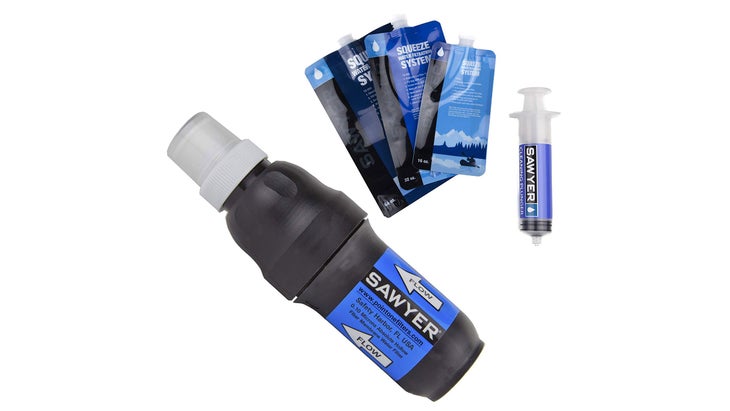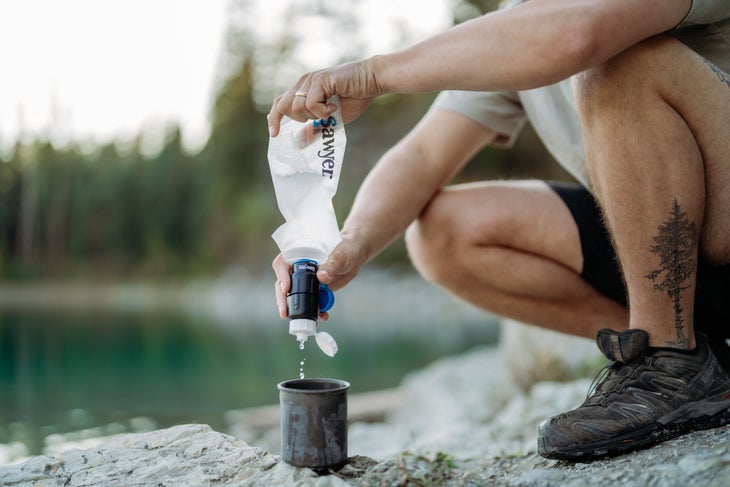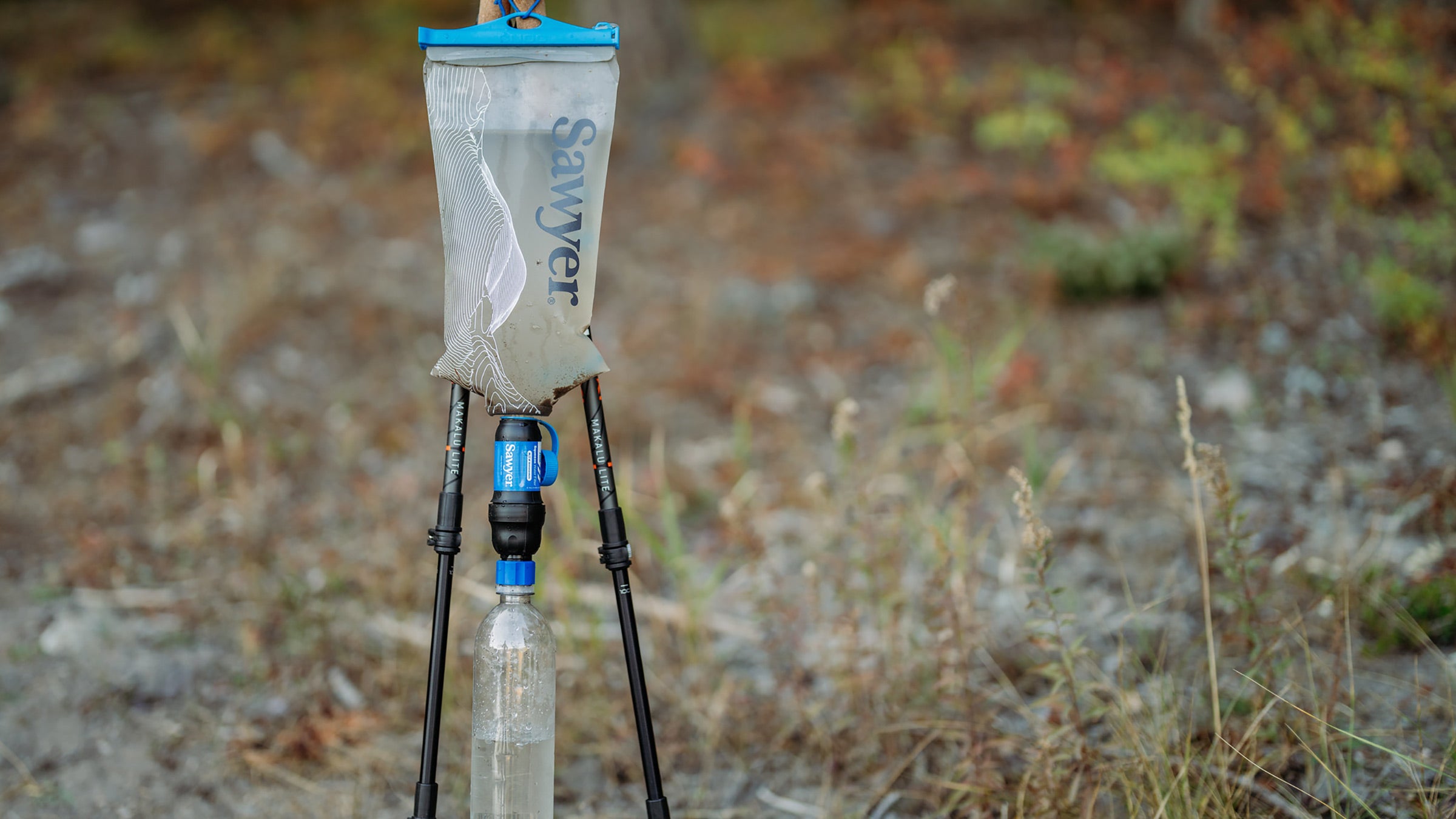Almost every hiker box I have ever seen after 11,000 miles on American trails has the same litter problem: the thin plastic water bags that accompany the popular Sawyer Squeeze, the most efficient and reliable water filter I have ever used. In theory, these ubiquitous black-and-blue mylar bags are a hiker’s dream, able to hold nearly a liter of water in exchange for less than an ounce of weight.

But water filters get clogged, and gear gets dropped on jagged rocks, these thin bags rip in the middle during the second scenario and burst at the seams with the first. Weight savings and water filters are useless if you don’t actually have a way to hold your water.
Seven years ago, a product designer named Gilad Nachman began solving the problem caused by the flimsy bags when his fledgling company, Cnoc Outdoors, . A soft-sided and completely collapsible water bladder, the Vecto offered a simple but welcome upgrade: thicker walls and rugged seams that could withstand the pressure needed to force water through a dirty filter or the abrasive chaos of a long-distance hiker’s cluttered backpack. The Vecto’s real genius, though, is that one end screws neatly into a Sawyer Squeeze; the other end opens completely and easily, making it simple to scoop water from paltry sources, or dip the thing into a lake.
And so, as long-distance hikers have replaced their Sawyer water bags on trails with Cnoc bladders and bottles, they have gotten into the sensible habit of tossing the ones that come free with the Squeeze into our repositories of collective junk and gear, hiker boxes. The discarded bags wait for whatever unlucky walker next needs some emergency water-storage fix. I have donated at least a dozen during my adventures. Those bags are still sitting somewhere, I presume, awaiting oblivion or apocalypse.
Hopefully, this wasteful practice is over: In January, the two companies finally partnered, making the unofficial hydration fix of thru-hikers official by and selling them as complete units. Not only did they make this sensible pair a legitimate couple, but the combination costs less than buying the two products separately.

These units are sold through Sawyer’s distribution channels and on its website, and the Vectro bladders feature both brand logos on them. But make no mistake, the bladder is definitely made by Cnoc Outdoors. Sawyer’s own water bags should gradually become a little less common in trailside piles, making it easier to spot the free Knorr sides and Pop Tarts always lurking in hiker boxes.
The companies have considered this collaboration for years, since it made so much sense. If people were already doing it, after all, why not make it easier, cheaper, and less wasteful by slimming the packaging and shipping needed for two products into one? But Sawyer—which also makes splints and sunscreen, bug repellants and sting kits—was in the process of trimming its individual products, or of simplifying the assorted SKUs it sold. “We had hundreds, and it was so hard to manage,” Amy Stead, an account manager at Sawyer, recently told me during a call alongside Cnoc’s Nachman. “When Gilad approached us, we were fighting against that.”
Previous partnership talks proved preemptive for Nachman and Cnoc, too. From my own experience, I know he’s right when he says that the quality of the Vecto has improved in recent years. Today, the bladder’s seams are able to take much more pressure before they, too, succumb. (If you’ve ever superglued a Cnoc together in a hotel room while on trail, you know true Sisyphean frustration.) And in recent years, Cnoc has introduced and then upgraded a water bottle called the ; it’s one of a few items that is with me on day hikes and thru-hikes alike, and Sawyer is now selling one of those with .
What’s more, Cnoc’s production capacity needed to expand to keep up with the potential demand of a company as large as Sawyer. Still a relatively fledgling business, Cnoc has now tapped into the more robust distribution network of Sawyer, a brand that has been making life outside easier for 41 years.
“Our early bladders were just not as good, and there was a natural maturity curve for Cnoc,” Nachman said. “And then we had to grow to a point where we could teach our factory to produce at this scale. And now is finally the time.”
This is, admittedly, not some revolutionary shift. Sawyer and Cnoc have simply opted to sell a combination of their own products that lots of us have been pairing ourselves for years. But I appreciate the idea that their move makes this bit of semi-hidden thru-hiker wisdom accessible to anyone that doesn’t necessarily have long-distance dreams. Sure, you could have learned about this pair through Reddit, YouTube, or any number of hiking blogs, really. But now you can just walk into REI or so many of the outfitters that sell Sawyer products and ask for it. A Sawyer atop a Cnoc is the fastest route to reliably clean water on trail; now, it’s faster and easier to get in the first place.


